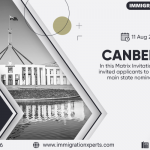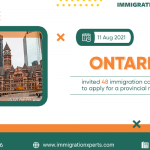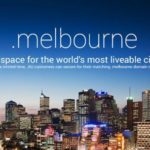“Crying out for workers”: Five Regional Areas To Welcome New Migrants
The Morrison government will divert migrants to key areas, establish a rapid train office, and oppose the US Treasury's reliance on immigration to stimulate economic growth and tax revenues.
In his first interview since joining the Cabinet, Population Minister Alan Tudge said immigration played a key role in the May 18 federal election results - the outlying suburbs of Melbourne, Sydney and Brisbane supporting the Coalition to send fewer migrants. and increased infrastructure.
Tudge said five regional zones would be designated as central to business sponsorship and advice deals designed to alleviate population pressures on the east coast by attracting more skilled migrants to the regions.
Southwest Victoria, Adelaide, the Regional Regions of South Australia, Far North Queensland and Kalgoorlie-Boulder will all receive "Designated Area Migration Agreements" which will allow state-of-the-art councils and companies to sponsor categories of workers.
Tudge also named Dubbo to NSW as a "crying out for workers" field.
"One of the skills shortages they have in far north Queensland is with Chinese-speaking diving instructors," he said. "This will not be on a national shortage of skilled labor list, but it is a very important role in meeting the needs of a growing tourism industry in the region."
Ministry of the Interior figures show that non-regional skilled migrant visas increased annually under the Coalition, while those devoted to regions increased from a high of 20,510 in 2012-13 to 10,198. in 2016-17.
Mr. Tudge's transition to the Treasury Portfolio will help bridge the gap between infrastructure and treasure planning that has characterized population policy over the last decade.
This coincides with the creation of a population center of excellence within the ministry to moderate the Treasury's focus on income and to examine the social and economic factors of immigration.
Despite the target, budget figures indicate that more than 270,000 temporary and permanent migrants will arrive in Australia in 2019, up from 259,000 last year. The figure is 40,000 more than expected in last year's budget, which is 15 percent.
"It's always a balance between economic growth and taking into account the significant pressures on our big cities," Tudge told The Sydney Morning Herald and The Age.
"The issue is not necessarily the overall growth figure for Australia, the challenge is the distribution of that growth."
Demographic pressures - particularly on infrastructure - were "very important issues" for citizens in last month's federal election, Tudge said.
"As soon as you get to the suburbs and outlying suburbs, people really feel the growth pressures we've had in Melbourne, Sydney, and southeastern Queensland." In many cases, infrastructure has not not only to cope with the demographic pressure, but also to massively increase the infrastructure.
Tudge said the Treasury's all-in-one population center, which will gather data on migration from several departments, "will crack as quickly as possible" as soon as funding starts on July 1.
"The ambition is to map population growth with the required services and infrastructure much more closely than in the past," he said.
Tudge said accelerating construction times could speed up some of the $ 30 billion allocated to infrastructure in the April budget if state governments wanted the projects to be delivered faster.
Of the $ 30 billion allocated in April, only 30 per cent is expected to be distributed over the next four years.
Get A Free Quote / Need a Help ?
Contact Us





